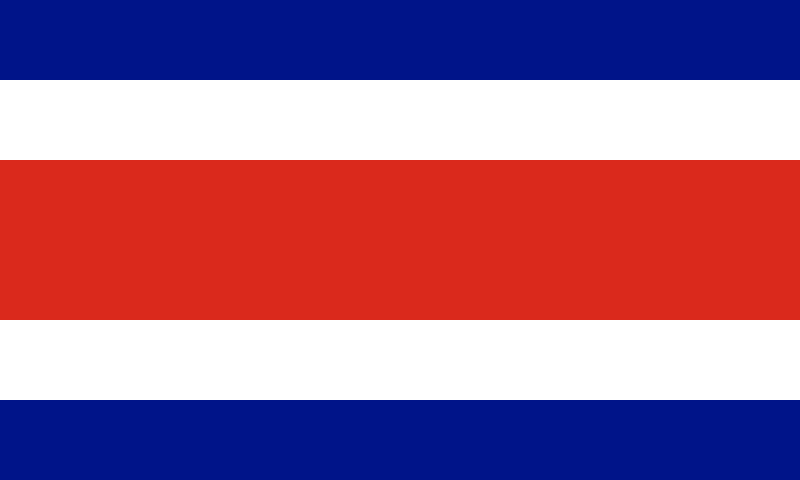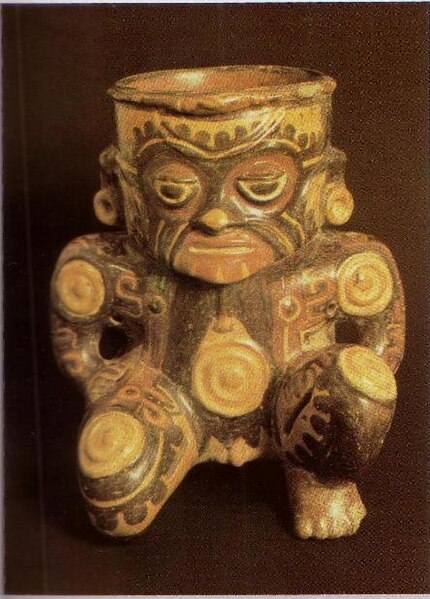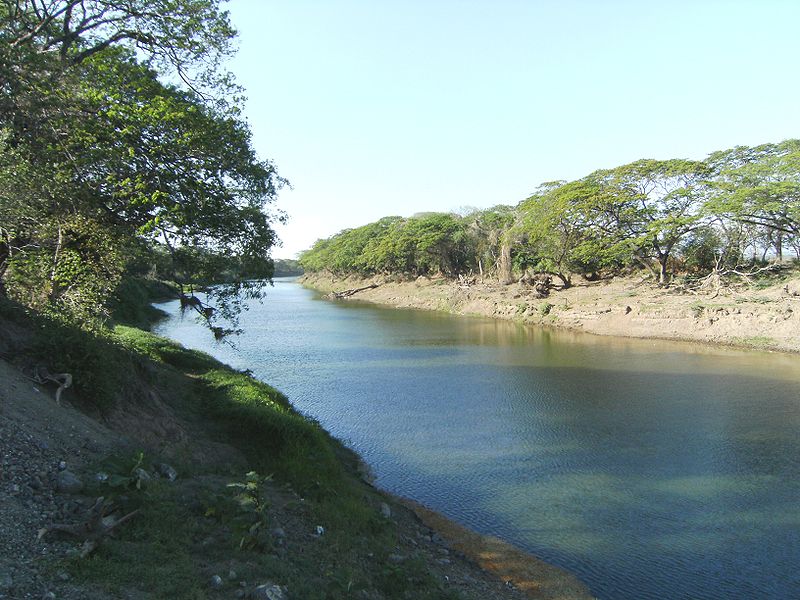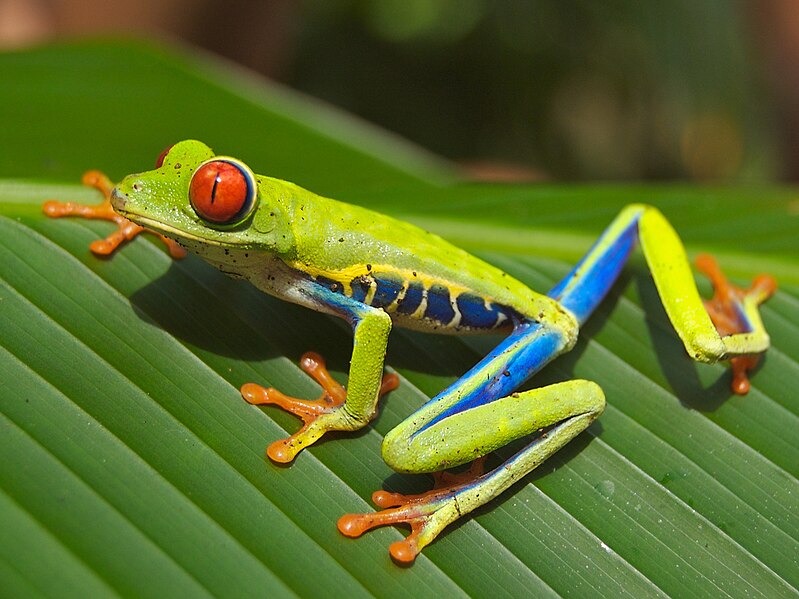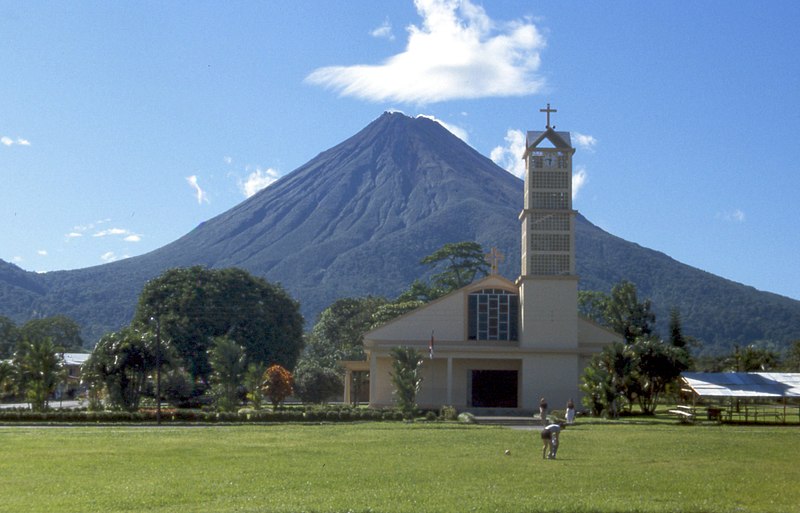The Ministry of Culture and Youth is the specialized
agency responsible for the coordination of cultural life in the country. The
work is divided into Directorate Ministry of Culture, Visual Arts, Performing
Arts, Music, Heritage, Library System, College of Costa Rica and Youth.
In general, the Ministry, but has many initiatives,
they hardly see the light at the lack of resources. It should be noted,
however, consistency and quality of ongoing programs such as the National
Symphony Orchestra of Costa Rica and the National Youth Orchestra, which is a
brilliant combination of two areas: Culture and Youth.
With respect to the visual arts, Costa Rica is
characterized by high quality artists such as Francisco Amighetti, Gonzalo
Morales Saurez, Rafael Fernandez, Rodolfo Stanley, among others, as well as a
strong sculptural tradition that has its roots in the areas of ancient stone,
stone sculptures, jade and ceramic pre-Columbian legacy that has been
cultivated and then continued by sculptors such as Francisco Zuniga, Domingo
Ramos, Jose Sancho, Max Jimenez, and Jorge Bonilla Ibo Deredia.
The Ministry of Culture, Youth and Sports is only one
aspect of the varied cultural life. Do not forget that Costa Rica is a
multilingual and multicultural, in which social communication systems coexist
very diverse ranging from Limon to Creole customs of Iberian origin, past
cultures and ways of thought as diverse as China , indigenous or Mennonite.
Always within the institutions, vibrant cultural life
in public universities (particularly the University of Costa Rica and National
University), either through publication, organization of exhibitions, education
or college group activities or just born within those houses of learning. With
its national, often their work spans the país.140
But overall, the Costa Rican culture is determined
more by their appearance and less popular by the classic look academic. The
latter is favored by official cultural institutions, who show a strong tendency
to see popular culture as a failure, so they tend to ignore the preferences of
many of the national cultural activities organized within a formal framework.
Despite this, I must say that there has been some support to other areas
considered minority or marginal, but nothing decisive. It is noteworthy that in
2006 Costa Rica was declared Latin American Capital of Culture.
the Costa Rica film.
It occupies an important place in the preferences of
Costa Ricans, frequenting the theaters is high. However, in terms of domestic
production, and despite the progress made in the sixties and the hand of
filmmakers such as Victor Vega, while in the Costa Rican Film Production
(official film institution, commonly known as the Center Film), the film
movement declined in the late eighties
Maintaining a constant production of documentaries,
many of them under order of nongovernmental organizations, and a vast
advertising industry that employs a number of audiovisual professionals. In
Costa Rica it is usual to have advertising campaigns for the rest of Central
America, and many U.S. productions, European and South American country as a
location used to.
A private university offering unique film career. The
University of Costa Rica through audiovisual producers graduates of the School
of Mass Communication Sciences, and the National Learning Institute holds
Imaging Center, a technical school for video and television. Specialists are
graduates of foreign film, particularly in Cuba. This allows to expect an
eventual rebound in production in this art.
Recent independent efforts to create a film industry
have clashed with the apathy of the state and the public. In the past 10 years
have produced more feature films than in the previous 50 years. However,
producers face an extremely small market that have difficulty meeting the costs
of production or distribution (only good export prospects could give some hope
in this regard). The problem is compounded when we note that the public is more
used to American movies national, a problem that far from being local,
affecting the entire Latin American cinema.
The Ministry of Culture has an office specializing in
ensuring the development of cinema in Costa Rica. The Costa Rican Film
Production Center is the state office with less budget and compared to the
entire state apparatus as a whole. However, efforts are co-produced by this
office, and independent producers. In addition, for 15 years there is a Film
and Video Shows Costarricense, a festival that brings together the national
production roughly in fiction, documentary and video art.
It is noteworthy, moreover, the disappearance of
former village cinemas, as "The Oak" in Alajuelita, "Modern",
the "Center City" or "Rex" (center of the capital). Instead
theaters proliferated malls.
But still, the film presents an important exception in
the cultural landscape of Costa Rica, in the sense that contrary to music,
literature and theater in the country there is an audience accustomed to see
independent films, alternative cinema ( addition to showing appreciation for
the current Hollywood productions), in short, which in some circles is
considered, rightly or wrongly, as quality cinema.
The reason for this is, firstly, the existence, for
several decades, a popular movie theater specializing in alternative cinema and
author (the Sala Garbo), and the other, the effort made in some universities,
peripheral cultural centers and even video rental centers for proposing such
productions within the framework of thematic series (gay, Hispanic, human
rights, copyright, such as Eisenstein, Truffaut-, etc.).
Nor is it uncommon in the smaller video rental shops
are available movies that have not been projected in large rooms or series of
classics there that people consume regularly. The Costa Rican film culture can
sorprender.
The
theater National Theater of Costa Rica.
In the field of performing arts, theatrical activity
in the country is dynamic, has a state company (the National Theatre Company)
and the discipline is taught professionally at two state universities, several
private institutes and the National Theatre Workshop . They work in 14
independent theaters, three state and some regional theaters, in which theater
can be seen from classical to vaudeville. In addition, there is often amateur
theater groups in some communities.
The theater attained such development, thanks mainly
to the contribution of renowned actors and directors Argentines and Chileans,
who left their countries in the decade of the seventies, fleeing from military
regimes that had been established in the Southern Cone. The Marquee Theatre,
Catania family, the Group Theatre Zurco and Angel were the main exponents in
the decades between the mid-seventies and late 1980's.
For several years, the Costa Rican theater in serious
crisis. This crisis is the result of the general trend of the theaters (such as
business entities) to find the quickest recovery of the investment in staging.
As an immediate consequence, despite the large number of theaters and variety
of the offer, the majority of works available to the general public is based on
situation comedies, lacking introspection.
Dance and Ballet.
It also has state sponsorship, yet has failed to reach
levels of popular theater. One of their top performers has been the teacher
Cristina Gigirey, international, independent group "Losdenmedium"
directed by Jimmy Ortiz reached some significance in the nineties with renowned
dancers such as Doris Campbell, Florence Chaves, David Calderon Rodolfo Seas,
Andrea Catania Daniel Marenco and others. The Young Choreographers Festival
brings together many of the great figures of the national dance and
choreography are often high quality. However, as in the theater, original works
are characterized by a thematic reductionism (looking mask changing the title
of the work) and homogenization of body expression, all of which contributes to
a feeling of monotony. This is resented by the public and the support of the
art is limited.
The Classic Ballet in Costa Rica does not yet have a
national representation but there are schools of ballet art project this stage.
The Costa Rican Youth Ballet, The Academy of Russian Ballet higher, the Atelier
Ballet, Danzay, Magnificat, among others, are major ballet organizations in the
country, carrying out a wide mount scene classics like Sleeping Beauty forest,
Swan Lake, The Little Mermaid, Coppelia, Don Quixote, La Bayadere, Bird of
Fire, Dream of a Summer Night, among other works ... There is already projected
at international festivals and ballet worldwide.
The National Theatre closes its season each year
presenting the ballet The Nutcracker, which has been a box office success and
level of ballet dancers in Costa Rica. He has performed every December since
2004 and has enjoyed the participation of leading figures from the National
Ballet of Cuba, American Ballet Theatre and Saint Petersburg Classic Ballet
Theatre. It has been run 4 times for the Cuban Pedro Martin Boza, director of
the Costa Rican Youth Ballet, a group that was the first to successfully undertake
to inaugurate the work in the country. It was also directed by Maria Amalia
Banners and Patricia Carreras, and American Peggy Willis.
Music.
Symphony Orchestra Hall. The National Symphony
Orchestra of Costa Rica, founded over 60 years, is one of the most renowned
orchestras in America. Since 2004, under the baton of Japanese master Chosei
Komatsu. This orchestra is on the basis of a commendable cultural project born
at the beginning of the seventies at the initiative of the then Culture
Minister Guido Sáenz, which was the creation of the Youth Symphony Orchestra,
for which the then President Jose Figueres Ferrer, invited the country to
American bandleader, Gerald Brown.
Within the framework of classical music include, in
addition, the National Symphony Choir, the National Lyric Company and the
Department of Bands. An important center of musical education constitutes half
the Castella Conservatory, secondary institution unique of its kind in Central
America. This conservatory has graduated the vast majority of musicians in the
country since its founding in 1953, among which we mention Eddie Mora Bermudez,
Allen Torres, Francisco Vargas Piedra, between otros.
Tropical music has a
special place in the likes of Costa Rica for their love of dance. The rhythms
of salsa, merengue and reggae heard in many of the most unexpected corners of
this country. Many groups have passed through the national platforms including
The Brillanticos, Selection, Explosion Orchestra. Interestingly, there are
musicians of the National Symphony Orchestra of Costa Rica also play either in
the alternative scene, either in groups of tropical music, so the circle is
complete, open wide sample of all the themes and styles.
literature.
Main article: Literature of Costa Rica. The literature
of Costa Rica has a history in the colony and marked European influence. Being
Costa Rica a young country, so is its literature and its history can be started
in the late nineteenth century. During the colonial period there is little that
can be collected from the literature at that time, most of the texts are no
more than a mere administrative character epistolary prose. In the late
nineteenth century can be found, however scanty, literature, customs,
picturesque anecdotes, stories and poems sentimental romantic trend. Some poems
were collected in the book the "Costa Rican Lira" (1890-1891)
compiled by Max Fernandez.
Periodization of Costa Rican literature is more
effective is the proposal by Professor Alvaro Soto Quesada, 144 which can be
recognized according to him five periods to which they are traditionally known
for generations:
-The generation of Olympus or Generation of 900
(1890-1920)
Peak period of liberal oligarchy, which caused
significant changes in social structures and labor. The literature of this time
involved in the formation and consolidation of a national consciousness.
Highlights include the novels "The bike" (1900) Joaquin Garcia Monge
and "sick tree" by Carlos Gagini; the "Concherías" (1905)
of Achilles Echeverria, as well as the poetry of Roberto Brenes Mesen, and the
numerous historical works of Ricardo Fernandez Guardia and the award-winning
work of Manuel Gonzalez Zeledon (Mago).
-The code generation American or Vanguard (1920-1940)
Thus named because they were linked to the magazine
American Repertory Joaquín García Monge. During this period there is the crisis
of liberal oligarchic regime, so the literature of this period is characterized
by new forms of discourse, as the grotesque style, fierce and corrosive humor,
parody and satire. Highlights the work of the same Garcia Monge, the writer
José Marín Cañas, poets Isaac Felipe Azofeifa and Eunice Odio, writer,
journalist, poet and painter Max Jimenez, of the painter Francisco Amighetti
and writer Carmen Lyra, immortalized in the Costa Rican literature especially
for his work Tales of my Aunt Panchita, considered classics of children's
literature in Costa Rica.
Joaquin Gutierrez,
Isaac Felipe Azofeifa and Fabian Dobles. Pillars of Costa
Rican literature.
-The generation of 40 (1940-1960)
During this era, social democracy is implemented in
Costa Rica. Establishing a chapter of "The Social Guarantees" by
Manuel Mora Valverde. It is a time of questions and renewals of important
social reforms and a new concept of state. The main themes addressed by the
literary works of this time are the social, the distribution of land and
dependence on transnational corporations. Literary realism is the slogan of
these writers: Joaquín Gutiérrez (Cocorí, Mangroves, Puerto Limon, Murámonos
Federico, you remember brother), Carlos Luis Fallas (Mamita Yunai, People and
gentecillas, Marcos Ramirez), Fabian Dobles (Tata World Stories online), the
poet Julian Marchena (Wings Escape), the poet and novelist Yolanda Oreamuno
(Route of his escape), and the storyteller Carlos Salazar Herrera (Tales of
Sorrows and Landscapes).
-The urban generation (1960-1980)
During this particular time in Costa Rica a process of
modernization and industrialization. In the literature of this period appears
as a theme prevalent in the city. It is the time of the Circle of Poets Rican
Jorge Debravo (we men), Laureano Albán (Fall Heritage), Marco Aguilar
(Raigambres), Julieta Dobles (Costa Rica poem to poem, Letters to Camila),
Francisco Zuniga Diaz (Stories forbidden love and some injunctions), Alfonso
Chase (I cultivate a white rose, Stories of the land of Tigre Hummingbird Water
and Fire) and writers such as Quince Duncan (Tales of Brother Spider), Alberto
Cañas Escalante ( The mills of God, Oldemar and colonels, Uvieta), Carmen Naranjo
(Song of tenderness, Beyond Parismina) and Jose Leon Sanchez (The Isle of
single men).
The generation of disenchantment and Postmodernism
(1980-current.)
The theme of the works of this period seems framed
within a context: the disenchantment with the state model promoted by the Costa
Rican politicians. Notable names Anacristina Rossi (La Loca de Gandoca), Ana
Istarú (Death and other ephemeral grievances, The flight of the crane), Osvaldo
Sauma (Family Portrait) and Rodolfo Arias Formoso (The Emperor Tertullian and
the Legion of super clean, the Burrow) among others.
Gastronomy
The Costa Rican Creole cuisine was created with the
contribution of three major cultural influences:
the indigenous, Spanish and Africana.
is, therefore, a mestizo cuisine, where
the mixture is cooked on the griddle pan with pre-Columbian Spanish plus the
creative contribution of African culture and other peoples who have arrived in
Costa Rican soil.
From pre-Hispanic cuisine from corn tortillas,
avocado, palm, peach and tamal (the latter is usually prepared in Costa Rica,
for the feast of Christmas and New Year, and wrapped in banana leaves). The
Europeans, on their arrival in America, they found corn, cacao, achiote,
potatoes, squash, pumpkin, squash, chile, tomatoes, cassava, avocado, custard
apple, pineapple, papaya and guava. The aborigines, before the Spanish arrival,
had a diet rich universe with corn as a source of energy, protein beans,
various berries, plus a variety of game (peccaries, wild pigs, deer, iguanas,
rabbits , tapirs, manatees, agoutis, armadillos, birds, various, among which
the turkey, unknown to the Europeans) and fishing, cooking deliciously seasoned
with salt, apazote, vanilla, chile varieties, cilantro coyote and others, using
cocoa butter for cooking. Stresses in the Central Valley of Costa Rica, pipian,
ketchup-based squash and red chile, a legacy of the Aztecs and brought to the
country by chorotegas still prepared in the same way as in ancient times.
With the Spanish arrival, came cattle, goats, pigs and
poultry, as well as techniques for preservation (smoking, drying, investment in
vinegar and salt, fat involvement) as well as the formation of minced (it is
believed, derived from the Andalusian stews called interludes), the indigenous dish
added to consumption accompanied by tortillas. The Andalusian influence found
in other Costa Rican dishes like meatballs, and in the bakery: ears, donuts,
the tosteles, the small pieces (which acquired tone tropical guava jelly added
to them), the prestiños (mixture of wheat flour baked and crisp, with honey
from sugar cane), quesadillas and ribs. Note that the Andalusians were one of
the largest groups first Spanish to arrive in Costa Rica.147 Among minced,
chopped arracache highlights (root area from Diquis), mince the chili sauce
(mixture of squash and corn), which are variants cantonal (for example, in
Greece, consisting of squash and white beans, and Athens, with the same
potatoes and beans), potato hash with meat, the chopped flower itabo with egg (which
is consumed especially in parts of Central Valley, including Canton Acosta, for
example), the green beans with minced meat, etc.
The Costa Rican dish that best sums up the mixture of
native and Spanish is the pot of meat, considered by some as the quintessential
Creole dish, served hot 149 usually accompanied by white rice (or achiotado)
and tortillas. It originates from the pot of meat potpourri Spanish, the
Europeans enriched the country's own vegetables.
-Breakfast includes gallo pinto with eggs, toast and
fried plantain.
With the arrival of Africans, we introduced a feature
of the Afro-Caribbean cuisine: the wooden spoon, which allowed new methods of
cooking and preparing meals. According to some scholars, 150 the Costa Rican
dish where they are perceived African influence is gallo pinto, rice and beans
mixture of black (sometimes red), whose traces can be found in other
Afro-Caribbean dishes from around the continent (Moors and Christians, and
congrí, Cuba, marriage of El Salvador, Brazilian feijoada, tacu-tacu Peruvian
Hoppin'John South America). The gallo pinto is often used as breakfast, and is
usually served with eggs, corn tortillas and sour cream. The preparation of
gallo pinto varies not only from country to country, but also in every region
of Costa Rica, with toast and fat in Guanacaste, wetter, less greasy and
cilantro in the Central Valley, and special training (based coconut) and unique
flavor in the Caribbean: The rice and beans, which can be served with a beef
steak, a steak or fried fish, accompanied by tostones (fried green plantains),
and is the quintessential dish Limon.
-Pati, Limon
typical cake.
Also come from other African traditional Costa Rican
dishes like tripe soup (which was already known in Spain, only the variant of
eating in soup appears on his arrival in America, influenced by indigenous,
native added vegetables), rice with chicken (rice emerged from Wolof from
Gambia, which found its variant Guanacaste rice with pork, and differs from
other countries because it is made with shredded chicken meat and whole
achiotado mixed with rice, peas , sweet corn and carrots), and coconut-based
desserts such as coconut candies (also known as Tatar or slices, depending on
the area) and coconut caramel. In Afro-Caribbean Costa Rican cuisine also
highlight the bon bread (black bread with spices) and pati (pastry stuffed with
meat and chile pepper) .
In the Pacific region, in the Puntarenas province, a
coastal town, from traditional dishes like vigorón (prepared with shredded
cabbage, add yucca, fried shell and meat, seasoned with chimichurri - chopped
tomatoes, with sauces and vinegar - all served in one or two tropical almond
leaves, tree representative of the city); varieties of ceviche (the chucheca is
special in the region), pickled rice with squid or shrimp, shrimp soup ,
seafood, the salad (a variation of the Spanish version, generally beef - made of
tuna with spices), rice guacho (sort of rice soup with local seafood, pork,
chicken), chute ( smoothie drink made with rice along with cinnamon, nutmeg,
sugar to taste, ice and milk), the slush (ice cream made with shaved ice,
sweetened with any kind of syrup, with milk powder and condensed milk),
including The most famous is the Churchill, which is larger and has helado.
-Roosters chayote with chorizo.
Other prominent Costa Rican dishes are the mouth
(known in other countries as a snack or top), used to accompany the spirits,
the rooster (mixture of tortilla with virtually anything else, and sometimes
you say "cock" when you want to entertain a visitor with a quick
meal), the married, and popular creole dish clear example of fusion, which
combines rice with beans pre-Columbian European and Italian pasta, accompanied
by hash, some kind of meat to choose, fried plantains (Afro-Caribbean heritage)
and ensalada.
Accompanying the above dishes drinks are native, some
degree of alcohol. Of indigenous origin is the chicheme prepared with corn,
black sweet ginger and left to ferment, the Chinchivi, made with sugar cane
broth, wine Coyol is a beverage derived from the sap of the palm of coyol
fermented, the Eggnog, made with milk, cream, egg, vanilla and brandy, the
chan, a drink of a shrub seed Guanacaste area, the horchata, whose ingredients
are boiled rice, roasted peanuts, milk and flavored water with cinnamon, rum,
sugar, cocoa and vanilla. It also mention the consumption of coffee,
traditionally taken by the Costa Rican breakfast or mid-afternoon, but also the
existence of other beverages used in its place as the Aguadulce (non-fermented
beverage based on sugar cane), chocolate and various types of tea. The most
traditional alcoholic beverage of Costa Rica is, however, liquor, liquor made
from sugar cane with a high ethanol content.
-Married Costa Rican dish.
Among the desserts, the bakery also mentioned above,
also include marshmallows, porridge, fruit jellies (quince, blackberry, peach,
guava, naranjilla, bananas), ice sorbet, honey squash, gruel orange shell, rice
pudding and sobao. Special mention deserves the cat, and its variant, the
drunk, who are a kind of handmade pastries filled with jam (usually of guava or
pineapple) and sugar-coated ground not inherited from the kitchen francesa.155
It noted also that the country is a major culinary
influence of other immigrant cultures, such as Italian cuisine, China and
Mexico, among others.
 |
| cake, or cocada torreja
|
 |
| typical Costa Rican breakfast
|
 |
| Limon typical cake
|
 |
| chayote cocks with chorizo
|
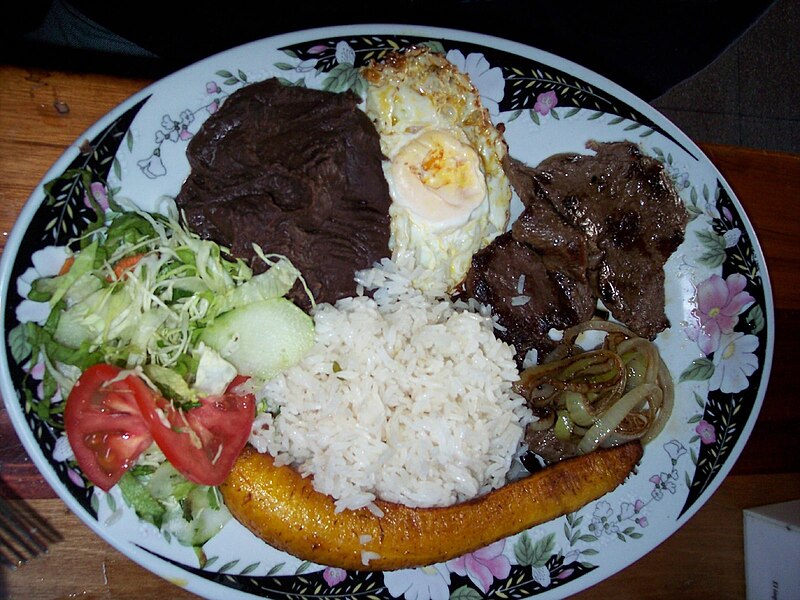 |
| typical married |
folklore.
The Costa Rican folk tradition includes various cultural
events including music, dance, legends and traditions, pumps and jingles,
colonial instruments and traditional songs, which are generally used during
popular festivities and employers, and vary according each region and people of
the country.
The Costa Rican folk music is produced in four
specific areas of the country: Guanacaste, The Great Central Valley, Limón and
Puntarenas.
-Music Guanacaste.
It is best known, with Spanish influence, Nicaragua,
Yucatan, Cuba, Panama and Colombia, and is manifested in the form of points,
batambas, starts lumps, flourishes, tambitos, Garabitos, parranderas and
Barranquitas among others. It is characteristic that accompanies the dance and
folk music with the singing of pumps, which are short and cheerful songs as quartets,
in which men and women rush-bottom liners or romantic picaresque. A lot of the
folk songs or folk that are interpreted in Costa Rica come from the Guanacaste
region, such as the Punto Guanacaste, El Torito, Passion, Love Season, Pampa,
The Horse Nicoyan and many others.
-Music of the Great Central Valley.
This has more Spanish influence and is manifested in
the form of peasant serenades with batambas different from Guanacaste (excel
style "jorqueño"), and the songs are characterized in that each
stanza is longer than the phrase, so the letter "does not fit well"
with the music and the singer should "have a race" in some parts to
keep the beat, saying the letter in a "hit", which gives it a
distinctive flavor such as The Tambito Josephine, The Tinaca, Café de Costa
Rica.
-Music Puntarenas.
This is distinguished by the jacket that is a
combination of country music with a rhythm Creole, for example, Colombian
cumbia and generaleño Tambito's more cheerful and played guitar. This area is
characterized by the celebration of the tunes, inspired by the "party of
the couple," the "candle of the angels", Puntarenas Carnival, or
the tales of the region.
-Music Limonense.
This has two influences: the Spanish and
Afro-Caribbean. The latter is the most rhythmic of the country and takes the
form of parades, dances with lots of comic or descriptive in nature and the
sinkit, more carnivalesque. From the union of the two influences are born
rhythms such as son, melodious and rhythmic. Also calypso, Indian pace that has
its own demonstration in the province of the Atlantic. Finally, another aspect
that characterizes the music Limon is the presence of type gospel songs and
melodies that are sung mainly in Protestant churches in the region.
Among the highlights
colonial instruments marimba, which was declared a national instrument of Costa
Rica on September 3, 1996, by Decree No. 25114-C published in the Official
Gazette No. 167. Other instruments are the quijongo, ocarinas, bass box, the Sabak,
reed flutes, accordion, mandolin and guitarra.
tales and legends.
Costa Rican legends fall into three groups: legends of
the land, religion and legends legends legends magia.157 earth are legends
themselves in any geographic area of the country that
narrate events that occurred in these places and that influenced to give its
current status, and are characterized by a strong Indian influence. They cite
the legends about Zurquí hill, the hill Tapezco, Irazu Volcano, Turrialba
Volcano, Island of Negritos, the treasure of Cocos Island, etc.. The legends of
religion, as its name implies, have a strong religious tradition, usually
Catholic, telling appearances or manifestations of the divine on Costa Rican
soil, as can be the appearance of the Virgen de los Angeles in Cartago, the
miracles of the Black Christ of Esquipulas in Santa Cruz de Guanacaste and the
appearance of the Virgin of Guadalupe in Nicoya in the form of a black mare
(which is held annually with the traditional Dance Yegüita). The legends of
magic are dominated by the presence of ghosts, specters ghostly own throughout
Latin America in Costa Rica also have their own particular manifestation, and
generally have a moralizing role, as can be the Llorona, the Cegua The Cadejos,
the Father without head, without oxen Carreta, the Tulevieja, Old Mount, the
Phantom of the plain, the Cuijen, the Witch Zarate, the witches of Escazu,
etc.
Among Costa Rican traditions, festivities are
highlighted combining indigenous with the Spanish influence, religious
festivals, civic celebrations and popular festivals. Highlight the celebration
of dance mare in Nicoya, the feast of the devils of Boruca in Coto Brus, the
celebration of the Black Christ of Esquipulas in Santa Cruz, the pilgrimage to
Cartago to visit The Bold and thanks or asking for favors, the August 2, the
lagarteada (hunting a lizard then released) on Good Friday in Ortega of Bag
(Guanacaste), the party of the driver 158 in Escazú, 159 Christmas meeting on
December 24, the religious processions of Semana Easter, the lantern parade on
September 14, the masquerades during the festivities and popular of all
peoples, to the rhythm of Cimarron, the celebration of Mother's Day on August
15, the stops and parades, carnivals, bullfights "a la tica" bull
riding, shift, decorating oxcarts, shops on people, etc.
festivals.
Among Costa Rican traditions, festivities highlights
the influence that combines indigenous, African, Asian, Spanish, religious
festivals, civic celebrations and popular festivals. Highlight the celebration
of dance mare in Nicoya, the feast of the devils of Boruca in Coto Brus, the
celebration of the Black Christ of Esquipulas in Santa Cruz, the pilgrimage to
Cartago to visit The Bold and thanks or asking for favors, the August 2, the
lagarteada (hunting a lizard then released) on Good Friday in Ortega of Bag
(Guanacaste), 22 the feast of the driver in Escazú, 23 the meeting of December
24 Christmas Eve, and religious processions Week Easter, the lantern parade on
September 14, the masquerades during the festivities and popular of all
peoples, to the rhythm of Cimarron, the celebration of Mother's Day on August
15, the stops and parades, carnivals, bullfights "a la tica" bull
riding, shift, decorating oxcarts, shops on people, etc.
-Province of San Jose.
The Festival of Light is a popular festival that takes
place in the city of San Jose, Costa Rica. Includes parades with floats,
masquerades, live music and fireworks. Because it takes place in December, the
Festival of Light is associated with the holiday of the year in the Costa Rican
capital.
The parade has an approximate distance of 3,200 m,
starting at the National Gymnasium and enters the Paseo Colon west of the
capital. After crossing the Paseo Colon, turns to follow through Second Avenue
until you reach the Plaza de la Democracia.
Since 2005 the festival added a parade that precedes
it and usually starts at 3 pm with the participation of troupes, choreography,
stilt walkers, Maroon, masquerades and bands. Before the festival the trees
from the Paseo Colón and route of Second Avenue are illuminated to give luster
to the route of the parade.
The Festival of Lights starts at 6 pm with fireworks
from the roofs of the tallest buildings in the metropolitan center and ends at
12am.
-Province of Alajuela.
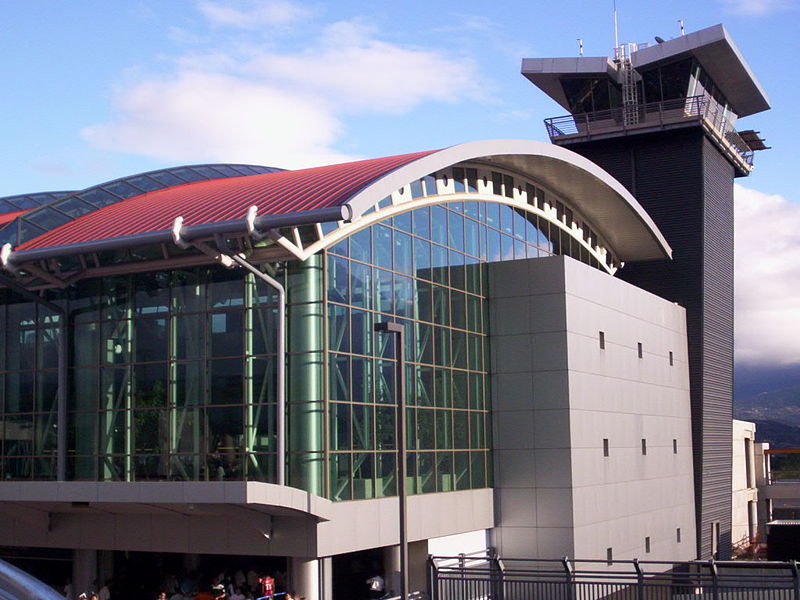 |
| Juan Santamaria International Airport. |
In the city of Alajuela cultural events are held as
the International Festival of Arts (FIA) and the annual International
Storytelling Festival: Alajuela City Word.
As for the cuisine, the ideal is to visit the Farmers'
Fair to find local ingredients. Throughout the year you can taste the typical
dishes of Costa Rica in the Municipal Market (in the center of Alajuela), or in
the La Garita, going to Athens (Canton), people recognized by the National
Geographic (magazine ) as the place with the best climate in the world. In La
Garita abound with quaint restaurants where folk costumes serve as the Corn
Festival, one of the most popular.
The Fiestas de Palmares was conducted in the month of
January, is one of the most anticipated and talked about for its great social
development for the community of Palmares to the whole country, with its
various activities captivates all tastes .
The population enjoys meals, concerts, top,
bullfights, cultural performances, among many other activities that are
responsible for satisfying the public that visit the area and thus become one
of the best parties in Central America.
These festivities conclude with the crowning of
"Miss Alajuela" and of course the Imperial Grand Concert, sponsored
by Costa Rica Brewery ending with the slogan: "Palmares ... A people to
make friends."
 |
| Hospital San Rafael de Alajuela.
|
-Province of Cartago.
The most important Catholic pilgrimage in the country
is the Pilgrimage to the Virgin of Los Angeles, The Patron Saint of Costa Rica,
known as "La Negrita". This celebration is held on August 2 at the
Basilica of Los Angeles and involves about 2.5 million faithful from all over
the country and each year is estimated to increase the number of pilgrims
around half a million people annually, who mounted or presented to the Virgin
to thank or ask your intercession for the personal, national or global;
The Basilica de los Angeles is not the only place
where pilgrims come to pay tribute to "La Negrita", other pilgrimages
are held in different parts of the country, such as: In San Carlos are made
three pilgrimages: Las Delicias , Pital and La Fortuna. In the southern region,
out of the chapel of Palmar Norte and reaches the Chapel of the Angels in
Ciudad Cortes, Osa, a distance of 15 km approximately. In Puntarenas, you do a
walk from the parish of El Roble Puntarenas to the Cathedral, and many other
small towns across Costa Rica.
The celebration concludes with the crowning of
"Miss Carthage" who is responsible devestir the patron saint of Costa
Rica with a dress chosen from among many that were made by believers.
-Province of Heredia.
 |
El Fortin. Heredia Canton.
|
The clowns and masks are an ancient custom deeply
rooted in the Costa Rican people. Are a common sight during the festivity
activities (after the patron saint of each village), seen running to a lot of
kids in the streets behind the clowns and ghosts. Usually clowns dancing
merrily to the music of the band.
La Giganta, the Devil, Death, the Police, the skull,
are some of the main clowns.
The giantess, the devil, the cadejos, the Segua,
parakeets, parrots and even barnacles, are part of the masks that made students
across the country, the largest are fiberglass and small are paper and clay.
The celebration concludes with the crowning of
"Miss Hall" and the dances and activities Halloween
-Province of Guanacaste.
Speaking of civic festivals of Guanacaste, is to speak
of folklore pampas, these festivals are characterized by stop and Sabanera
culture and take place between February and March of each year.
Clowns, fireworks, marimba music and couples dancing
for joy everywhere filling the streets of the colonial province, all together
form an attractive part of tradition, celebrated in each of the municipalities
of Guanacaste. But no longer can see are brightly colored shawls worn by women
earlier in the processions.
This celebration is important to note "the dance
of the Indians promesanos" which accompany Christ in processions, Masses
and other rituals. This dance is performed by residents of Santa Cruz and
represents indigenous to the region who come to Christ to worship them and pay
tribute or tithe as in the colony.
This dance along with the "Dance of the
Yegüita" in the festivities of the Virgin of Guadalupe in Nicoya are the
only ones that can be found in the region within the popular cultures of mixed
tradition.
The dances, music and other popular expressions are
also found throughout the province and are the ones that have earned the
interest of folklorists and researchers of the popular.
The festivities culminate with the crowning of
"Linda Guanacaste" and traditional "Bullfighting a la Tica"
-Province of Puntarenas.
During the month of February the city of Puntarenas
dresses up to deliver one of the most anticipated shows: Puntarenas Carnival,
able to gather millions of enthusiasts who enjoy the brightness of the floats,
the joy, emotion and rhythm of the groups that paraded before them in the
natural setting, most beautiful country.
During the course of Puntarenas Carnival all present
experience and feel the true meaning of this magnificent festival, breaking
free of social and cultural ties that organize contemporary society.
Carnival has the presence of the groups, competing for
first place showing the quality of their costumes, the choreography and timing
of the large deployment of their carriages, which added to the topics chosen by
the directors of the Bands invited, will vibrate and dance to present trying to
leave a legacy to build a better world.
This artistic display has over twenty years of
experience, being considered the most important carnivals in the region, the
festival concludes with the crowning of "Miss Puntarenas" and the
Grand Concert that offer national and international artists on the beach.
-Province of Limon.
To celebrate the day of the cultures are celebrated
carnivals where the pleasant appearance Limon Caribbean, is transformed every
October, when the essence of this extraordinary province is concentrated in ten
days of history, culture and celebration.
In this event, many revelers mingle with the curious
and fill the streets hoping to see the flashy extras, formed by groups with
colorful costumes, specializing in Brazilian Samba dancing and other tropical
rhythms. Penetrating percussion rhythms and daring dances invade Lemon color,
sensuality and extravagance.
The late King Alfred brought the first carnival to
Costa Rica in 1949, starting with a couple of friends and a common ideal. The
celebration became a symbol of unity in Costa Rica, where sometimes the
relationship between the black majority and Lemon mainly descendants of Spanish
in San Jose, were a little tense.
Today, the little King celebration has become one of
the most recognized civic festivals in Central America. While in most Latin
American countries is celebrated on Columbus Day or the Day of Discovery of
America October 12, Costa Rica does not celebrate the arrival of Europe to the
New World but rather Cultures Day. The version of the holiday policy recognizes
the contributions of all the influences that have touched the diverse culture
that exists today in the country, the festival ends with the crowning of
"Miss Lemon."
